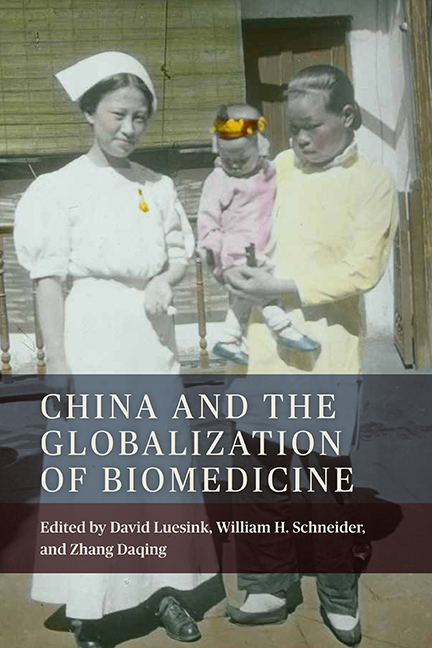Book contents
- Frontmatter
- Dedication
- Contents
- List of Illustrations
- Preface
- Acknowledgments
- List of Abbreviations
- Introduction: China and the Globalization of Biomedicine
- Part One Hygiene and Disease Construction in Late Qing China
- Part Two The Indigenization of Biomedicine in Republican China
- Part Three The Spread of Biomedicine to Southwest China, 1937–1945
- Afterword: Western Medicine and Global Health
- List of Chinese and Japanese Terms and Names
- Selected Bibliography
- List of Contributors
- Index
5 - Shanghai’s Female Doctors: A Discussion of the Gendered Politics of Modern Medical Professionalization
Published online by Cambridge University Press: 27 March 2021
- Frontmatter
- Dedication
- Contents
- List of Illustrations
- Preface
- Acknowledgments
- List of Abbreviations
- Introduction: China and the Globalization of Biomedicine
- Part One Hygiene and Disease Construction in Late Qing China
- Part Two The Indigenization of Biomedicine in Republican China
- Part Three The Spread of Biomedicine to Southwest China, 1937–1945
- Afterword: Western Medicine and Global Health
- List of Chinese and Japanese Terms and Names
- Selected Bibliography
- List of Contributors
- Index
Summary
A common feature of medical practice in Shanghai before 1949 was the dominance of male physicians; the only exception was in the field of obstetrics, in which female practitioners predominated. Investigations of the status of the Western medical profession in Shanghai have done much to reveal the social complexity of the profession, but the subject of female doctors in China has been largely unexamined by historians. Perhaps this is because although the careers of Shanghai's top woman physicians were dramatic and influential, in a male-dominated medical world these women nevertheless appear as exceptions, and although they are sometimes mentioned in passing, sustained historical analysis of gender in the study of Chinese medicine is lacking. We might compare the situation in China to a 1904 account of the limited participation of female physicians in the American Medical Association's annual meeting: “Twenty years ago, they stood together outside the door. Now they sit in isolation on the inside; their influence nil.” Within such a framework of male dominance, what accounted for women's progress in medicine in modern Shanghai? What was the professional status of modern woman physicians? How was their professional domain fashioned? How did this compare to the women who were also entering into medical careers as traditional physicians? When women entered into male-dominated domains, gender differences and gender relations became a focus of patriarchal attention and control. Thus, at the same time that women were becoming liberated on the professional front, they suffered gender-specific political restrictions. On the one hand, in areas such as professional status, income, marriage, and family, their inferior position in comparison to males stood out. On the other hand, the cachet of being a female doctor set them apart from other women as well as from their male medical peers, so once female physicians broke into the public sphere, they were very active in social, cultural, and political affairs. This chapter aims to elucidate the professional liberation and hardships of modern female physicians, their professional values, and the gender-specific body politics that they experienced.
- Type
- Chapter
- Information
- China and the Globalization of Biomedicine , pp. 131 - 156Publisher: Boydell & BrewerPrint publication year: 2019

